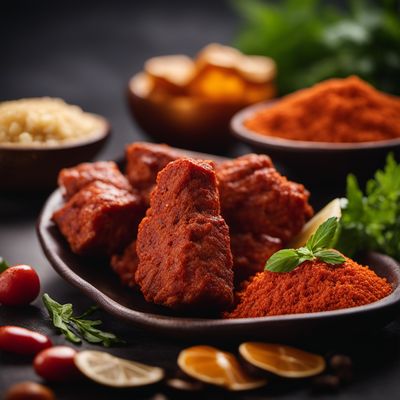
Ingredient
Cranberry flavour
Tangy Delight: Exploring the Vibrant Cranberry Flavour
Cranberry flavour is characterized by its vibrant combination of tartness and sweetness. It has a tangy and slightly acidic taste, with a hint of bitterness. The flavour is reminiscent of fresh cranberries, offering a refreshing and lively sensation on the palate. Its texture is smooth and velvety, enhancing the overall mouthfeel of dishes. The appearance of cranberry flavour is typically a deep red or pink hue, evoking a sense of richness and intensity.
Origins and history
Cranberries are native to North America and have a rich history dating back centuries. Native Americans used cranberries for medicinal purposes and as a food source. The fruit gained popularity among European settlers in the 17th century, and cranberry cultivation began in the United States. Today, cranberries are widely cultivated in North America, particularly in regions such as Massachusetts, Wisconsin, and Quebec.
Nutritional information
Cranberry flavour is a good source of vitamin C and dietary fiber. It is low in calories and contains beneficial antioxidants that promote overall health and well-being.
Allergens
Cranberry flavour does not typically contain any known allergens. However, individuals with allergies to cranberries should exercise caution when consuming products containing cranberry flavour.
How to select
When selecting cranberry flavour, look for reputable brands that use natural cranberry extracts or essences. Check the ingredient list to ensure it does not contain artificial additives or preservatives. Opt for products that have a strong and authentic cranberry aroma.
Storage recommendations
To maintain the freshness and quality of cranberry flavour, store it in a cool, dry place away from direct sunlight. Ensure the container is tightly sealed to prevent moisture or air from affecting the flavour. Proper storage can help prolong the shelf life of cranberry flavour.
How to produce
Cranberry flavour is typically produced by extracting the essence or natural oils from cranberries. This process involves crushing or pressing the cranberries to release their flavor compounds, which are then concentrated and used to create the flavouring.
Preparation tips
Cranberry flavour can be used in a variety of ways. It is commonly used in baking, adding a tangy twist to cakes, cookies, and muffins. It can also be incorporated into sauces, dressings, and beverages, enhancing their flavor profiles. When using cranberry flavour, start with a small amount and adjust according to taste preferences. It pairs well with other fruits, spices, and herbs, allowing for endless creative possibilities in the kitchen.
Culinary uses
Cranberry flavour is commonly used in baking, particularly in recipes for cranberry bread, scones, and pies. It is also a popular addition to sauces, such as cranberry relish or cranberry glaze for poultry dishes. Additionally, cranberry flavour can be used to enhance the taste of beverages, including cocktails, smoothies, and teas.
Availability
Cranberry flavour is widely available in grocery stores, supermarkets, and online retailers. It can be found in both liquid and powdered forms, making it easily accessible for culinary enthusiasts.
More ingredients from this category » Browse all

Mixed berry flavour
The Burst of Berry Bliss: Exploring Mixed Berry Flavor

Cream flavour
The Essence of Cream

Melon flavour
"The Refreshing Essence: Exploring the Delightful Melon Flavor"

Tropical flavour
Exotic Delights: Unleashing the Vibrant Essence of the Tropics

Brown sugar flavour
Sweet and Rich: Unveiling the Essence of Brown Sugar Flavour

Feijoa flavour
The Exotic Essence: Unveiling the Enchanting Feijoa Flavor

Fruits of the forest flavour
Enchanting Blend: Unveiling the Fruits of the Forest

Pepper flavour
The Fiery Essence: Exploring the World of Pepper Flavour

Rose flavour
The Enchanting Essence of Roses

Jasmine flavour
Aromatic Floral Elixir

Cassis flavour
The Enchanting Essence of Blackcurrant

Tandoori flavour
The Fiery Essence of Indian Cuisine